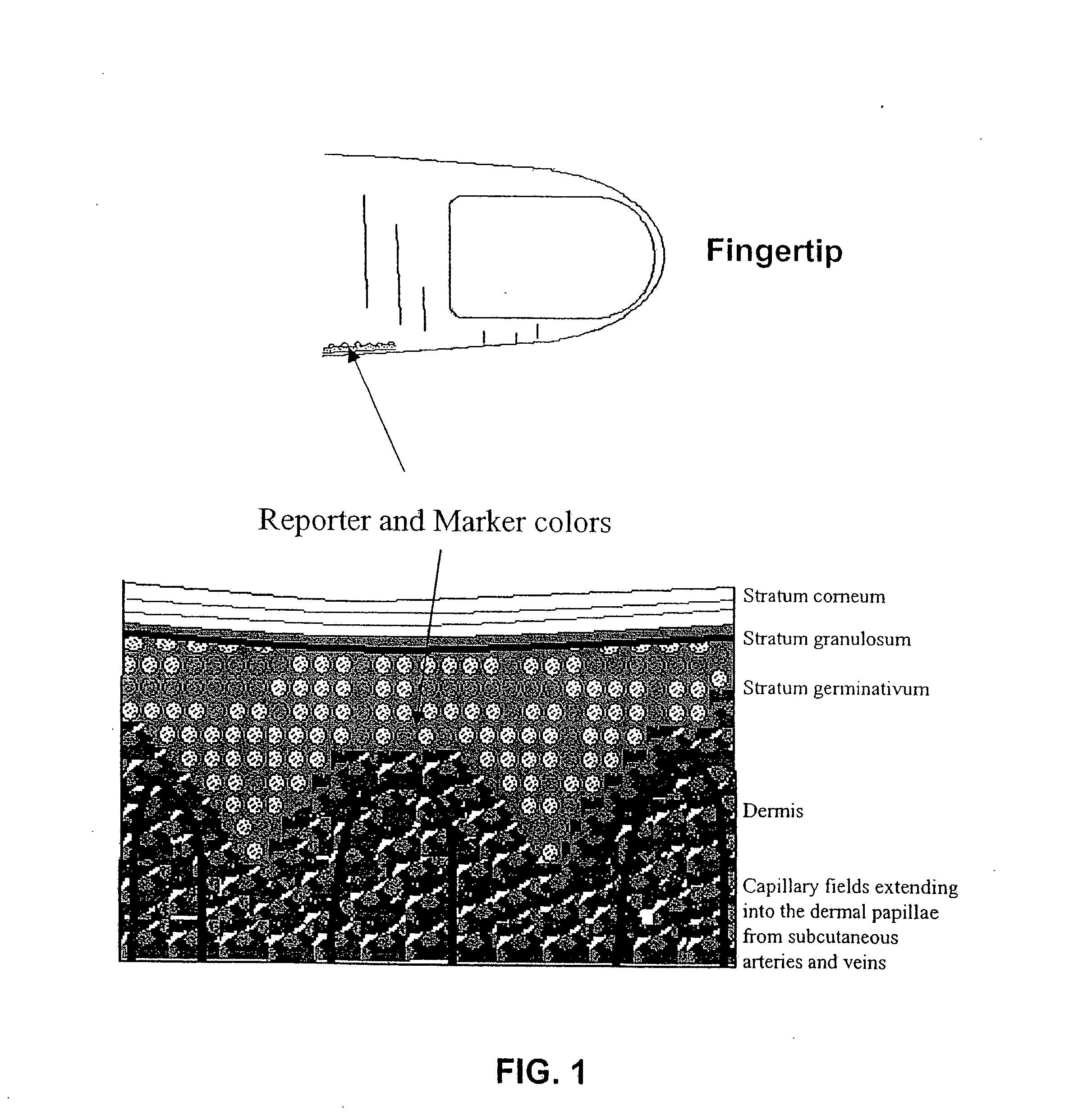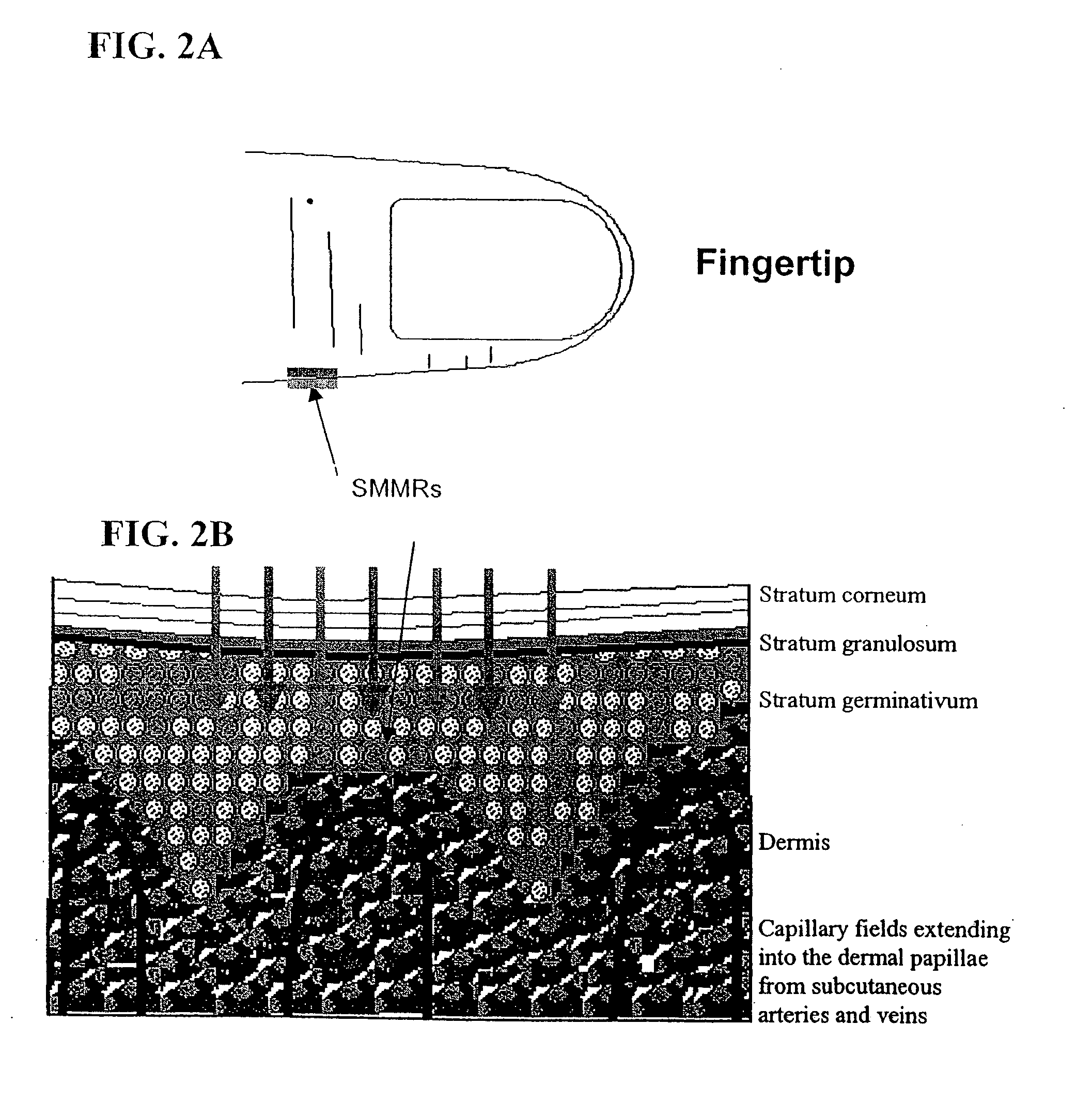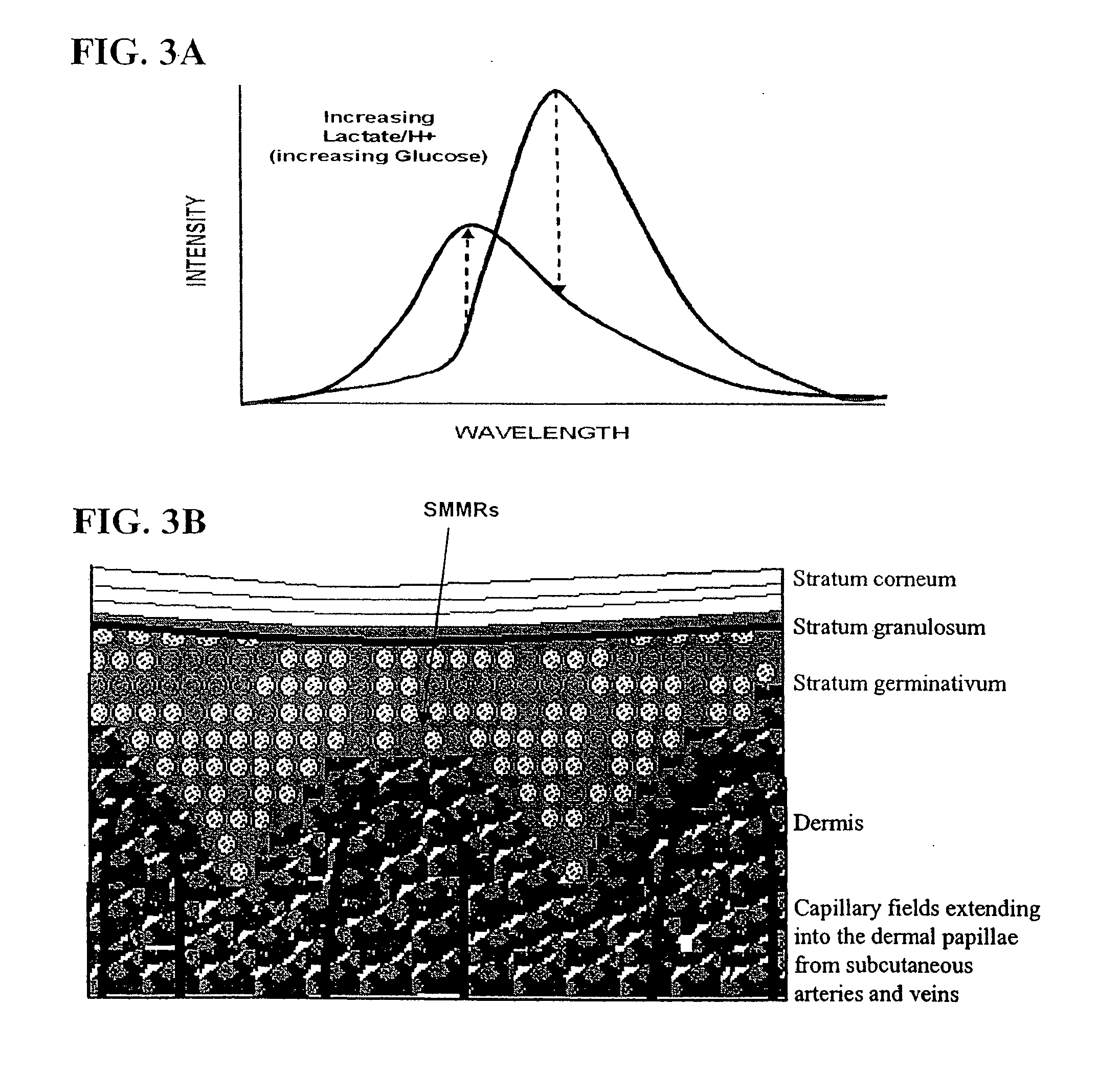Non-invasive measurement of analytes
- Summary
- Abstract
- Description
- Claims
- Application Information
AI Technical Summary
Benefits of technology
Problems solved by technology
Method used
Image
Examples
example 1
Relating Fluorescence of Mitochondrial Membrane Probes to D-Glucose Concentration
[0453] Described herein is a technique for establishing the dose-response relationship for tracking skin and blood glucose concentrations using mitochondrial membrane potential. The SMMR used in this embodiment have the demonstrated property of being mitochondrial-specific vital stains that respond in a direct relationship to the rate of glycolysis, which is directly related to intracellular glucose concentration. The fluorescence response of one specific embodiment of this invention uses SMMR exhibiting an excitation wavelength of from 290 to 790 nm, more preferably 400 to 550 nm, and most preferably from 440 to 490 nm, i.e., the wavelengths used to excite a fluorescence response of the SMMR. The fluorescence is monitored at above 480 nm, preferably above 490 nm and most preferably at 501 nm. The upper range for monitoring is at or below 790 nm. Excitation and emission wavelengths are selected to min...
example 2
Relating Fluorescence of Energy Transfer to a Reporter Dye to D-Glucose Concentration
[0463] SMMRs can also be used to report the metabolic state of cells, by using such dyes to monitor NAD(P)H concentration. NAD(P)H can be excited at wavelengths of 340 to 360 nm. Over this wavelength range, the molar absorption coefficient of SMMRs such as Rh123 is low (Rh123 ε−1 cm−1 from 345 nm to 425 nm compared with 6.3×103 L·M−1 cm−1 for NADH. (NADH and NAD(P)H are indistinguishable by their absorption or emission spectra.) Excitation at 350 nm of tissue that has been incubated with Rh123 shows a distinct fluorescence signal at 530 nm. This fluorescence arises because of collisional energy transfer from NAD(P)H to the Rh123. Under conditions where the energy transfer is efficient this process leads to an enhancement of the sensitivity with which NAD(P)H can be detected, shown in equation (6) as:
[0464] The excited state of Rh123 (Rh-123*) relaxes to the ground state by fluorescence with almo...
example 3
Relating Fluorescence of Membrane Localizing Reporter Dyes to D-Glucose Concentration
[0465] Membrane localizing dyes are used to detect activity of membrane bound proteins. Dyes such as diphenylhexatriene have been used in the past to monitor membrane fluidity. However many dyes may be used to monitor membrane activity by energy transfer mechanisms. Dyes that are useful in this role include molecules that have lower singlet energy levels than amino acid residues such as tryptophan, that is, they absorb light at longer wavelengths than 320 nm. Suitable dyes include, but are not limited to xanthenes, cyanines as well as diphenyl hexatriene and its derivatives. The efficiency of energy transfer is determined by the separation of the donor and acceptor pair and is given by the expression in equation (7): E=Ro6Ro6+r6(7)
where E is the efficiency, R0 is the Förster radius and r is the donor acceptor separation. The Förster radius is defined as the donor acceptor separation that gives a...
PUM
 Login to View More
Login to View More Abstract
Description
Claims
Application Information
 Login to View More
Login to View More - R&D
- Intellectual Property
- Life Sciences
- Materials
- Tech Scout
- Unparalleled Data Quality
- Higher Quality Content
- 60% Fewer Hallucinations
Browse by: Latest US Patents, China's latest patents, Technical Efficacy Thesaurus, Application Domain, Technology Topic, Popular Technical Reports.
© 2025 PatSnap. All rights reserved.Legal|Privacy policy|Modern Slavery Act Transparency Statement|Sitemap|About US| Contact US: help@patsnap.com



